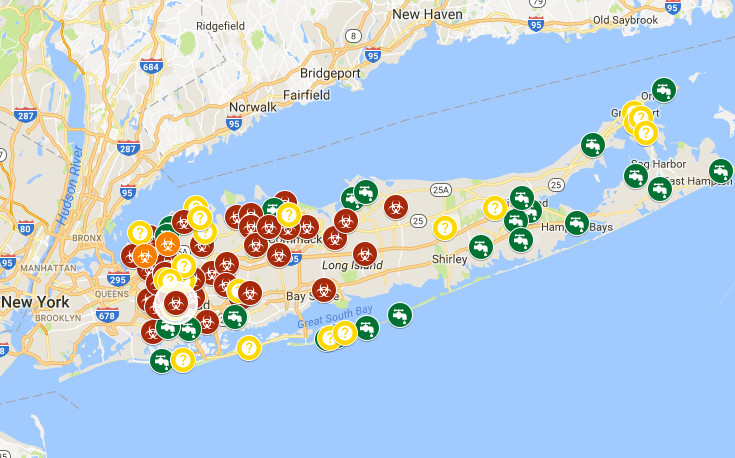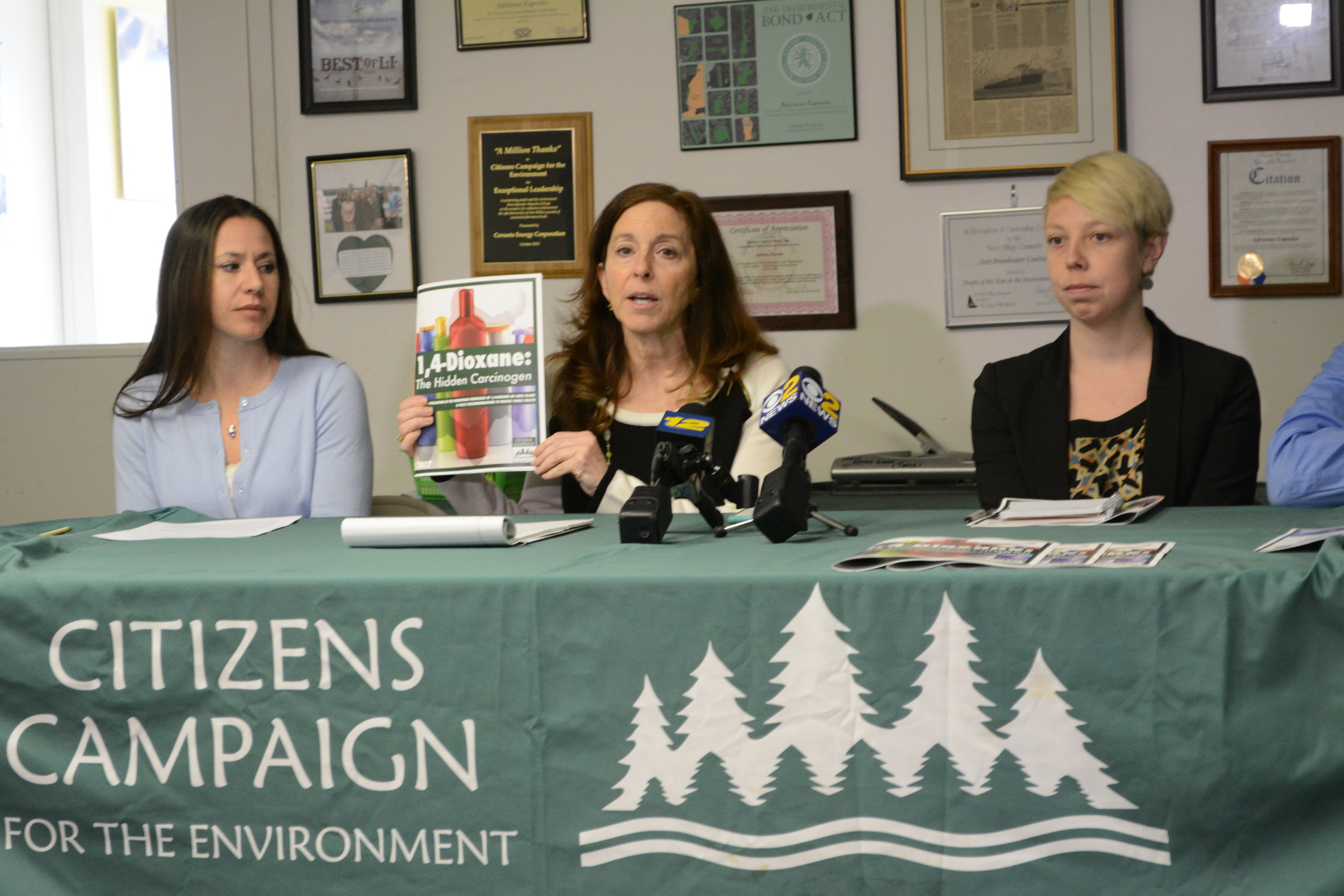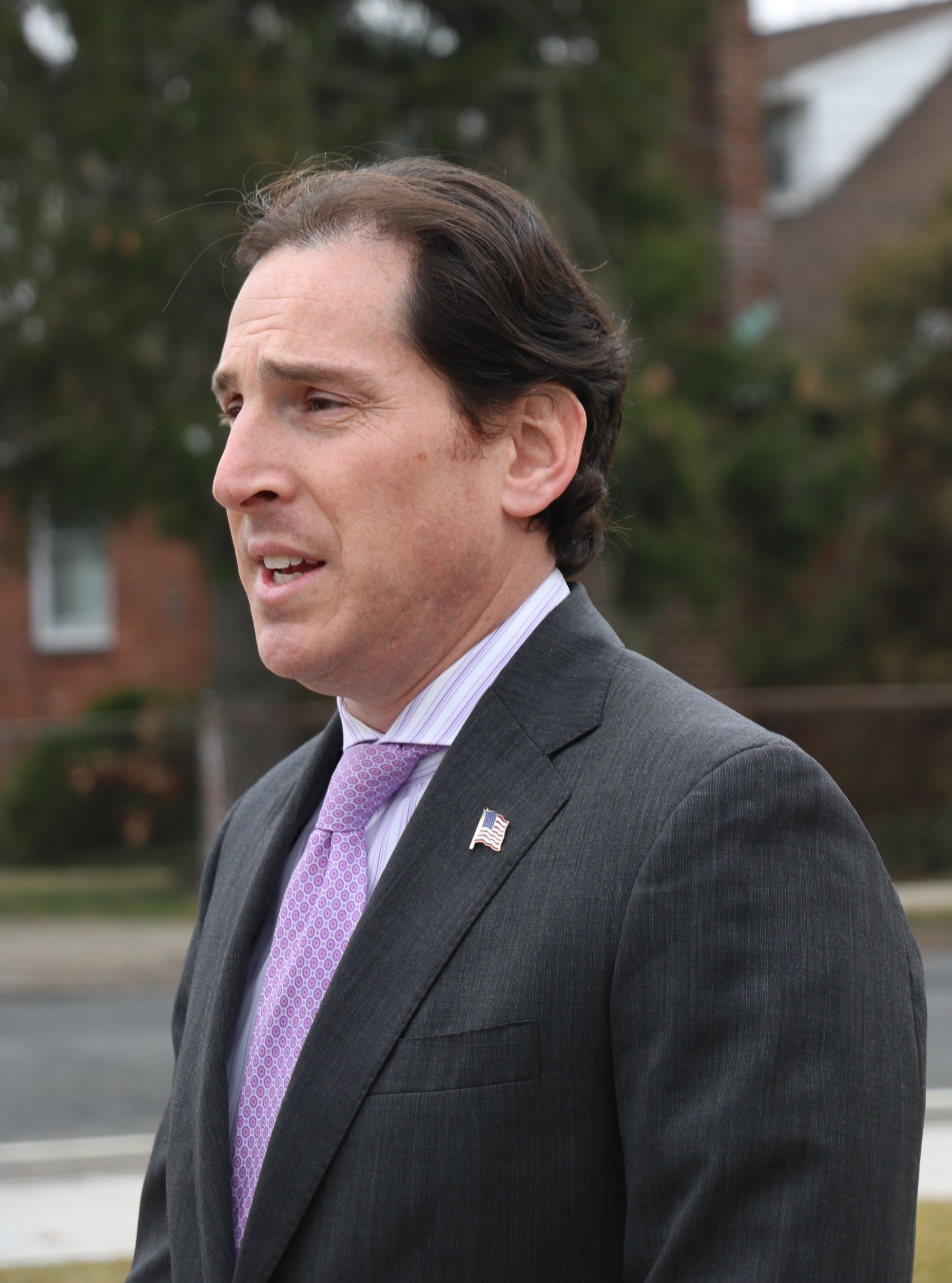Sunday, May 12, 2024
Carcinogen found in 39 L.I. water districts
Trace amounts of a chemical classified by the Environmental Protection Agency as “likely to be carcinogenic,” were found in water supplied by dozens of Long Island water districts, according to a study released by the Citizens Campaign for the Environment on Feb. 28.
New York American Water tested at a high of 0.92 parts per billion for the substance, 1,4 dioxane, at its Lynbrook operation, which supplies water to Malverne and parts of West Hempstead, according to the report. At New York American Water’s Merrick operation, the reading was 1.35 parts per billion.
The report also showed that the Water Authority of Western Nassau had the second highest levels of dioxane on Long Island, at 12 parts per billion, with varied levels over a period of three years for all water authorities.
Neither the EPA nor the state currently regulates dioxane in drinking water. The State Department of Health, however, sets the limit for all unregulated chemicals at a maximum contaminant level of 50 parts per billion — significantly above the EPA’s maximum for any cancer-risk chemical of 0.35 parts per billion.
The CCE report is based on data found in the annual drinking water quality reports from 58 major public water suppliers from 2013 to 2015. Many of the reports included dioxane detection information, and those without it were contacted by the CCE for further information.
Over the course of three years, the Town of Hempstead Water District’s water contained, at times, dioxane levels of 10 parts per billion. Franklin Square Water District’s maximum dioxane level was 1.5 parts per billion.
The origin of the problem
Dioxane gets into the water through products that contain it, including laundry detergent, soap, shampoo and body wash, according to the report. Up to 46 percent of personal-care products contain the chemical, which is not added to consumer goods but rather is an unwanted byproduct of ethoxylation — a process used to reduce skin irritation caused by petroleum-based ingredients. Once in the groundwater and soil, the report stated, it is hard to remove. “Legacy” pollution — pollution left behind from past industrial activities — is also a source of dioxane contamination.
“The public really cannot take too many actions right now other than to avoid products that have 1,4 dioxane, but even that is so difficult to tell because it’s not listed as an ingredient,” Adrienne Esposito, executive director of Citizens Campaign for the Environment, said at a March 1 news conference. “Part of the remedy here is that we’re calling on our U.S. Senate reps and our congressional reps to mandate that the FDA call on these companies to get rid of 1,4 dioxane. They don’t need it, they don’t have to include it, it should be banned.”
Manufacturers can remove dioxane easily and cheaply, the report states, but because the FDA doesn’t mandate it, companies don’t.
The village of Freeport had no detectible dioxane, and Rockville Centre had a maximum of 0.21 — -below the EPA guideline.
In a written statement, Carmen Tierno, president of New York American Water, said that water delivered to customers’ homes and businesses meets or surpasses all federal and state health department regulations. “We began testing for 1,4 dioxane at point-of-entry locations at our treatment plants in 2014 as part of the United States Environmental Protection Agency’s Unregulated Contaminates Monitoring Rule #3,” said Tierno. “There is currently no chemical-specific federal or New York state drinking water standard for 1,4 dioxane, however, it is regulated by the New York State Department of Health at a maximum contaminant level of 50 parts per billion.”
Tierno added that the water authority’s highest detection level — 1.35 parts per billion — is far below levels allowed by the state, and the Department of Health’s standard. “New York American Water is also scheduling to collect samples at locations where results are not yet available,” Tierno said. “We will continue to work with the EPA and NYSDOH on the development of new standards for dioxane in the future.”
In New York state, no action is required if dioxane is detected up to the state’s allowable level for any unregulated contaminant of 50 parts per million. But any levels above the EPA’s guideline of 0.35 parts per million is disturbing, said Maureen Dolan Murphy, CCE’s executive program manager. “When we see levels above the EPA standard on Long Island, it causes great concern,” Murphy said, adding that dioxane is an emerging contaminant, and no formal studies have been directly linked it to any illnesses. According to the EPA, short-term exposure may cause eye, nose and throat irritation; long-term exposure may cause kidney and liver damage.
State Sen. Todd Kaminsky, who last month sponsored legislation requiring the state to review and regulate dioxane, said, “Today’s report highlights the need for swift and aggressive action by New York state to rid our drinking water of unsafe levels of 1,4 dioxane. I’ve spoken with the health commissioner and the Department of Environmental Conservation’s commissioner, and they have assured me that if the federal government will not set a standard within the next three months, they are going to set one themselves.”
Kaminsky added that although no water district on Long Island filters for dioxane, the Suffolk County Water District is doing a pilot program called advanced oxidation that, if successful, could be a blueprint for the rest of Long Island. “If it works, all the water authorities on Long Island will want to use that,” Kaminsky said. According to a recent News 12 story, the Suffolk County Water District reported that dioxane filtration systems could cost anywhere from $500,000 to $750,000 — which would have to be funded by taxpayers.
A copy of the Citizens Campaign for the Environment’s report can be found at www.citizenscampaign.org/campaigns/Dioxane.asp
Daine Taylor contributed to this story.
HELP SUPPORT LOCAL JOURNALISM
The worldwide pandemic has threatened many of the businesses you rely on every day, but don’t let it take away your source for local news. Now more than ever, we need your help to ensure nothing but the best in hyperlocal community journalism comes straight to you. Consider supporting the Herald with a small donation. It can be a one-time, or a monthly contribution, to help ensure we’re here through this crisis. To donate or for more information, click here.
Sponsored content
Other items that may interest you











